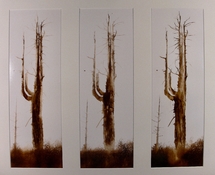I've found that using a drydown factor, as you do and as Fred Picker and his Zone VI literature for his drydown timers advocated, was only a rough approximation. I find that I can't really decide on the final subtle changes and manipulations to a print unless I evaluate a print that has already dried. Even then, selenium toning often changes the print enough that I need to go back and reprint another a bit differently to account for the toner. Prints dry-down very differently depending on lots of different factors, such as overall tonal distribution and, really critical, how important the white and near-white values are on the print.
In any case, I have learned to be patient while waiting for my prints to dry. I speed things up by hanging them on clips on my magnetic white board over the darkroom heater, which speeds up drying a bit. In the summer, I'll take prints outside and let them dry in the heat and sun a bit before taking them back to the darkroom.
The light you use for evaluating the prints is important too. I try to simulate what I consider "ideal" display lighting, keeping in mind that real-life display conditions are often darker (so I'll err on the side of a bit lighter print values in the shadows).
At any rate, by the time I get to the "almost keeper" stage, drydown has been taken into account. If I have a print like your pre-drydown prints that is simply too dark overall, it ends up in pieces in the trash. I do use bleaching for a lot of things, but not to salvage a really too dark print that I could make better and more consistently just by printing another.







